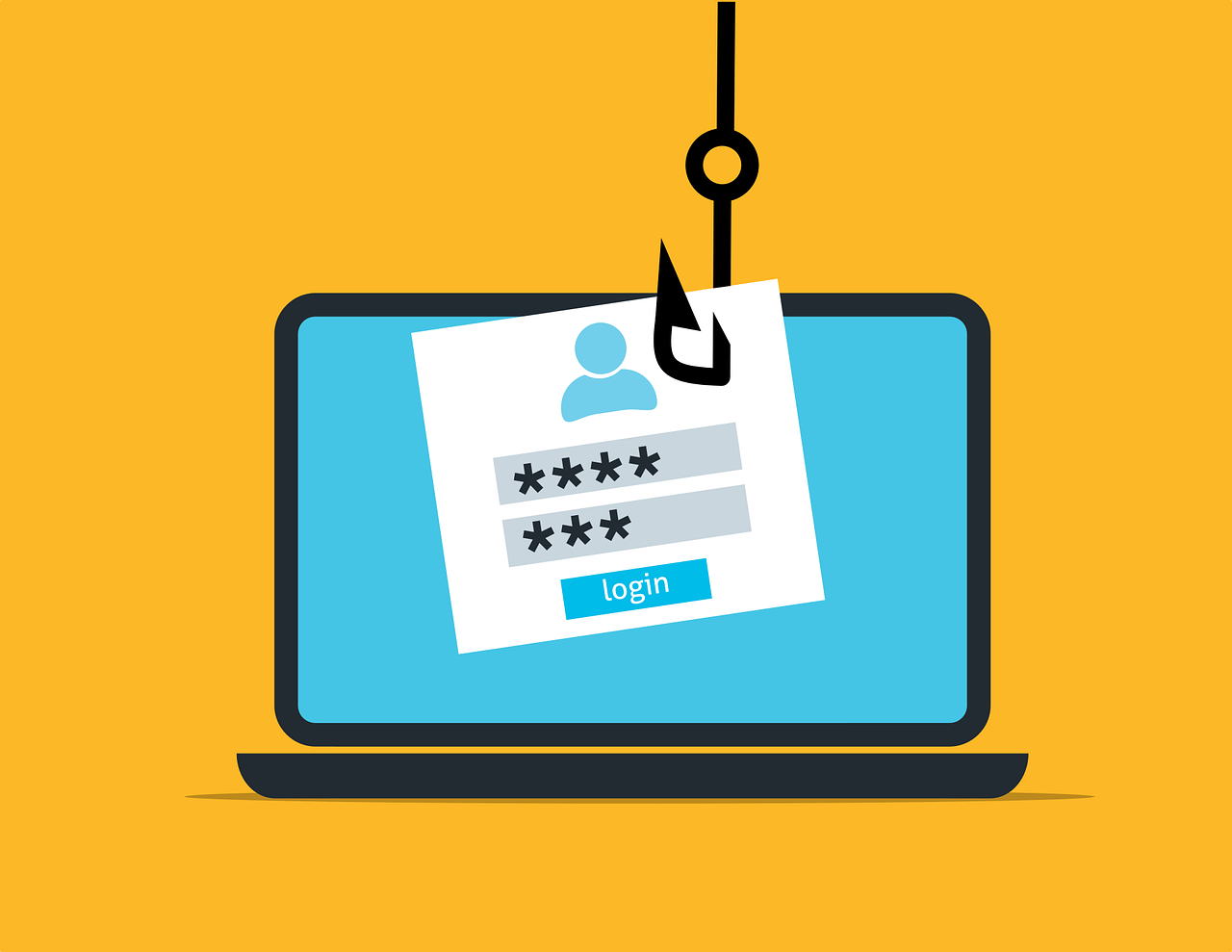Estimated reading time: 9 minutes
In today’s digital landscape, where our lives are increasingly intertwined with the internet, it’s more important than ever to be aware of the dangers lurking online. Phishing scams, a pervasive and evolving threat, pose a significant risk to individuals and organisations alike. Cybercriminals employ sophisticated tactics to deceive unsuspecting victims into divulging sensitive information, leading to financial loss, identity theft, and other devastating consequences.
This article will delve into the intricate world of phishing scams, equipping you with the knowledge and tools to recognise and avoid these malicious schemes. By understanding the common tactics used by cybercriminals, you can empower yourself to stay safe online.
What is Phishing?
Phishing is a type of cyberattack where malicious actors attempt to trick individuals into revealing sensitive information, such as login credentials, financial data, or personal details. They often pose as trustworthy entities like banks, government agencies, or well-known companies. Phishing attacks primarily exploit human vulnerabilities, relying on psychological manipulation and deception rather than technical exploits.
The goal of a phishing attack is to steal valuable user data, such as personally identifiable information (PII) or login credentials. Attackers use this information to access your accounts, steal your money, or commit fraud.
How Phishing Works: Luring the Unsuspecting Victim
Phishing works by enticing victims with seemingly legitimate emails or other forms of communication from a trusted sender. The message typically contains a sense of urgency or fear, prompting the victim to take immediate action. It might warn of a security breach, a problem with your account, or an enticing offer that seems too good to be true.
The message will then direct you to click on a link or open an attachment. This link might lead to a fake website designed to mimic a legitimate one, or it could contain malware that downloads onto your device. Once you provide your information or download the malicious file, the attacker gains access to your sensitive data.
Common Tactics Used in Phishing Scams
Phishing scams come in various forms, each designed to exploit different psychological vulnerabilities. Being aware of these tactics is crucial to protecting yourself.
1. Creating a Sense of Urgency or Fear
Phishing emails often employ urgency or fear tactics to pressure recipients into acting quickly without thinking. They might claim your account is compromised, a payment is overdue, or you need to act immediately to avoid negative consequences. This sense of urgency is intended to override your rational judgment and make you more likely to fall for the scam.
2. Impersonating Legitimate Sources
Phishing attacks often involve impersonating trusted entities like banks, government agencies, or popular companies. The emails or messages might use official logos and branding to appear convincing, and the sender’s address might be spoofed to look legitimate. Attackers can even use compromised email accounts to send phishing messages, making them seem even more authentic.
3. Offering Enticing Deals or Rewards
Phishing scams often lure victims with irresistible offers, such as free gifts, discounts, or prize winnings. These offers are designed to appeal to your desire for something valuable and encourage you to click on a malicious link or provide your information. If an offer seems too good to be true, it probably is.
4. Using Spoofed Links and Websites
Phishing attacks often use spoofed links that appear to lead to legitimate websites but actually redirect to malicious ones. These fake websites might look identical to the real thing, making it difficult to tell the difference. Always double-check the URL before entering any sensitive information on a website.
5. Exploiting Current Events and Trends
Cybercriminals often exploit current events and trends to make their phishing attacks more relevant and convincing. They might use news headlines, popular topics, or seasonal themes to create a sense of legitimacy and urgency. For example, during tax season, you might receive a phishing email disguised as a communication from the tax authorities.
6. Employing Social Engineering Techniques
Phishing attacks often rely on social engineering techniques to manipulate victims into taking a desired action. These techniques involve psychological manipulation and deception to gain trust and exploit human vulnerabilities.
Examples of social engineering tactics include:
- Authority: The attacker impersonates someone in a position of authority, like a CEO or government official.
- Scarcity: The attacker creates a sense of urgency by claiming an offer is limited or time-sensitive.
- Familiarity: The attacker pretends to be someone you know or trust, like a friend or colleague.
- Reciprocity: The attacker offers you something of value in exchange for your information.
- Trust: The attacker builds trust by using personal details or referring to shared experiences.
Types of Phishing Attacks
Phishing attacks take many forms. Understanding the different types of phishing attacks can help you better identify and avoid them.
1. Email Phishing
Email phishing is the most common type of phishing attack. The attacker sends deceptive emails that appear to be from legitimate sources. These emails often contain urgent requests or enticing offers to trick recipients into revealing confidential information or clicking on malicious links.
2. Spear Phishing
Spear phishing is a more targeted form of email phishing. The attacker researches the victim and tailors the message to their specific interests or role within an organization. Spear phishing emails often contain detailed information about the recipient to increase the likelihood of success. Because spear phishing communications are much more personalized, they can look especially legitimate and are thus even more dangerous.
3. SMS Phishing (Smishing)
SMS phishing, or smishing, utilizes text messages to trick recipients into disclosing sensitive information or downloading malware onto their devices. These messages often contain urgent requests or enticing offers to prompt immediate action.
4. Voice Phishing (Vishing)
Voice phishing, or vishing, involves phone calls from scammers posing as legitimate entities. They might claim to be from your bank, a government agency, or a technical support company. They aim to obtain personal information or financial details over the phone.
5. Angler Phishing
Angler phishing targets victims through social media platforms. The attacker might impersonate a customer service representative and offer to help with a problem. They might then ask for your login credentials or other sensitive information.
Consequences of Falling Victim to a Phishing Scam
Falling victim to a phishing scam can have severe consequences, including:
- Financial Loss: Attackers can use your stolen information to drain your bank accounts, make unauthorized purchases, or open new lines of credit in your name.
- Identity Theft: With your personal information, attackers can steal your identity and use it to commit various crimes, including opening bank accounts, obtaining loans, and even renting apartments.
- Malware Infections: Clicking on malicious links in phishing emails can download malware onto your device, compromising your data and potentially giving attackers remote access to your computer.
- Reputational Damage: If your work email account is compromised, attackers can use it to send phishing emails to your contacts, potentially damaging your reputation and that of your organization.
How to Protect Yourself from Phishing Scams
Protecting yourself from phishing scams requires a multi-layered approach that combines technology, vigilance, and awareness.
1. Be Suspicious of Unsolicited Communications
Always be wary of unsolicited emails, text messages, or phone calls, especially those requesting sensitive information or urging immediate action. If something seems suspicious or too good to be true, it probably is.
2. Verify the Source
Before clicking on any links or downloading attachments, take the time to verify the sender’s identity. Check the email address or phone number against official sources, and be cautious of any discrepancies or inconsistencies. A financial institution would never ask you to verify your account information online.
3. Don’t Click on Suspicious Links
Hover your mouse over links without clicking to reveal their actual destination. If the URL looks suspicious or unfamiliar, don’t click on it. Never click on the link provided in an email you believe is fraudulent. It may contain a virus that can contaminate your computer.
4. Keep Software Updated
Ensure your operating system, web browsers, and antivirus software are up-to-date with the latest security patches. Cybercriminals often exploit vulnerabilities in outdated software to launch phishing attacks and other cyberattacks.
5. Use Strong Passwords and Two-Factor Authentication
Use strong, unique passwords for all your online accounts and enable two-factor authentication (2FA) wherever possible. This adds an extra layer of security, making it harder for attackers to access your accounts even if they obtain your login credentials.
6. Be Wary of Requests for Personal Information
Legitimate organisations rarely request sensitive information like passwords, Social Security numbers, or bank account details via email or text message. If you receive such a request, contact the organisation directly using a verified phone number or website.
7. Educate Yourself and Others
Knowledge is critical to staying safe online. Take the time to educate yourself and your family members about the dangers of phishing scams and how to recognise them. Share this information with your colleagues, friends, and family, encouraging them to be cautious and report any suspicious activity.
8. Report Phishing Attempts
If you encounter a suspected phishing attempt, report it to the appropriate authorities. This helps track down the perpetrators and prevent others from falling victim to the same scam.
9. Monitor Your Accounts Regularly
Review your bank account and credit card statements frequently for any unauthorized transactions. If you notice any suspicious activity, report it to your financial institution immediately.
Phishing scams are a constant threat in the digital world, but by understanding their tactics and taking appropriate precautions, you can significantly reduce your risk of becoming a victim. Remember, vigilance, awareness, and a healthy dose of scepticism are your best defences against these malicious schemes.
By following the tips outlined in this article, you can navigate the online world more safely and confidently, protecting yourself and your loved ones from the dangers of phishing attacks.
For the latest tech news and reviews, follow Rohit Auddy on Twitter, Facebook, and Google News.






